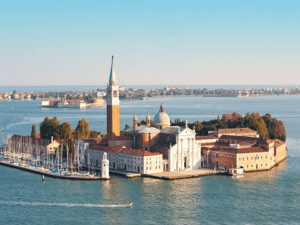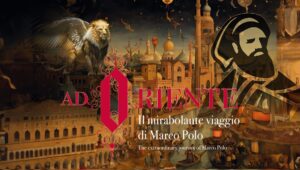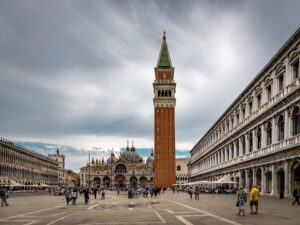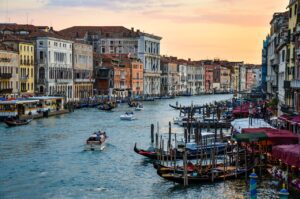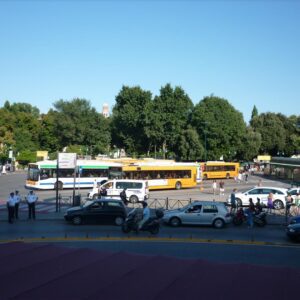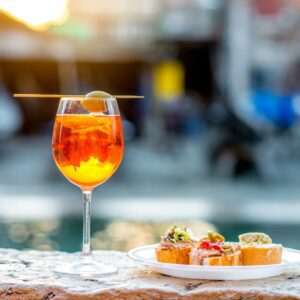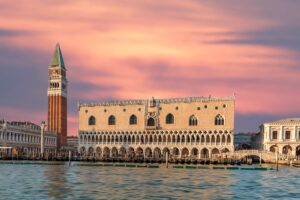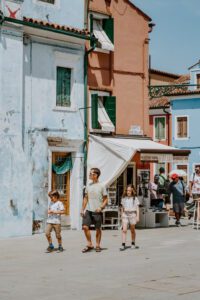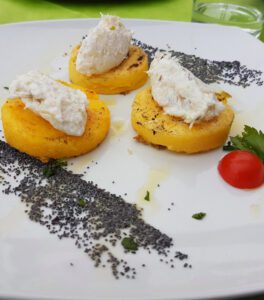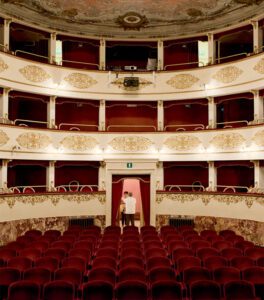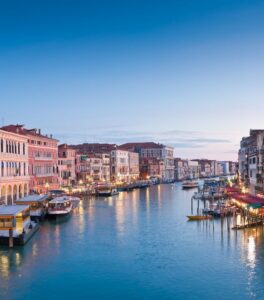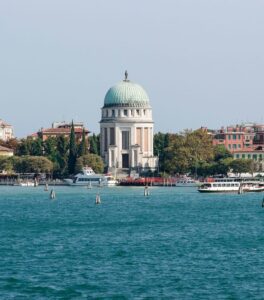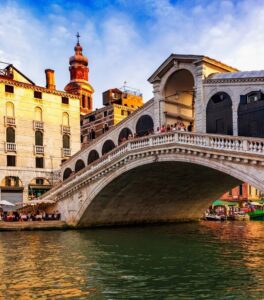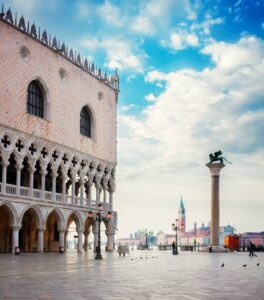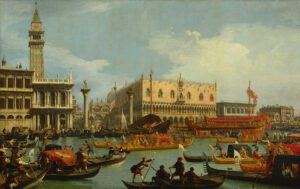
Venice, a city of incomparable beauty, is universally known as ‘La Serenissima’. But where does this fascinating appellation come from? Let us discover it together in this short journey that reveals the secret behind the name.
Historical Origins
‘La Serenissima Repubblica di Venezia’ was the official title of Venice in medieval and Renaissance times. The term ‘Serenissima’ means ‘the most serene’ or ‘the most tranquil’, reflecting the power, stability and greatness of the Republic of Venice in those times. Venice was not only a hub for trade and art, but also a maritime power that exercised its dominance over the seas.
A Stable Government
The name ‘Serenissima’ emphasises the wisdom and balance of the Venetian government. The Republic was ruled by the Doge, elected for life, who represented the authority of the state, but his power was balanced by various councils and magistracies. This structure of government ensured considerable political stability and effective management of domestic and foreign affairs, factors that contributed to the city’s serenity.
A Symbol of Splendor
‘La Serenissima’ also evokes the image of a splendid and magnificent Venice, with its glittering canals, sumptuous palaces and artistic masterpieces. This designation recalls the city’s golden age, when it was a hub of culture, innovation and art, attracting artists, merchants and travellers from all corners of the world.
A Lasting Legacy
Today, Venice continues to be a symbol of beauty and serenity. ‘La Serenissima’ is not only a historical reference to its glorious past, but also a tribute to the resilience and greatness of this unique city. Venice remains one of the most loved and visited destinations in the world, a living treasure that continues to enchant and inspire.
In conclusion, ‘La Serenissima’ is more than just a nickname: it is a title that encapsulates the very essence of Venice, a city that, despite the challenges, continues to shine with timeless serenity.
